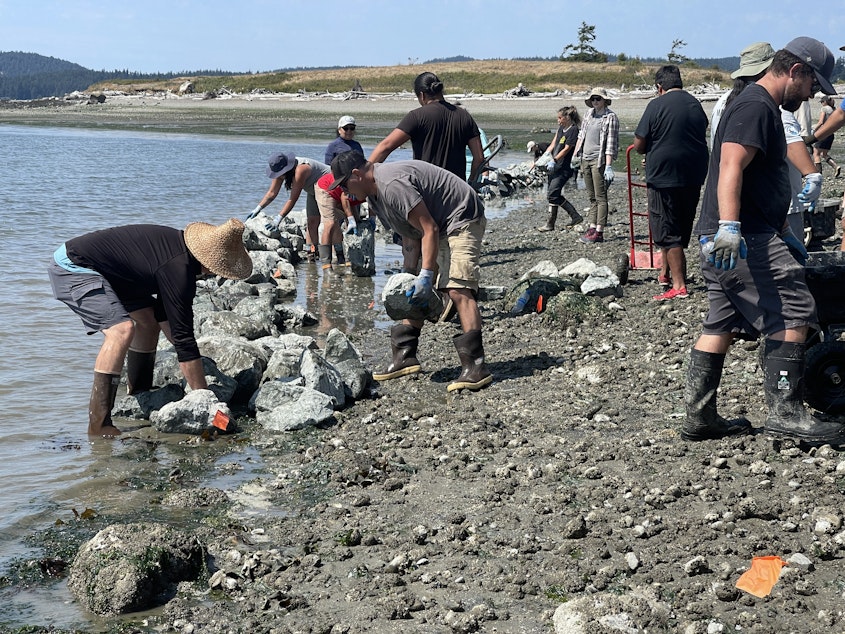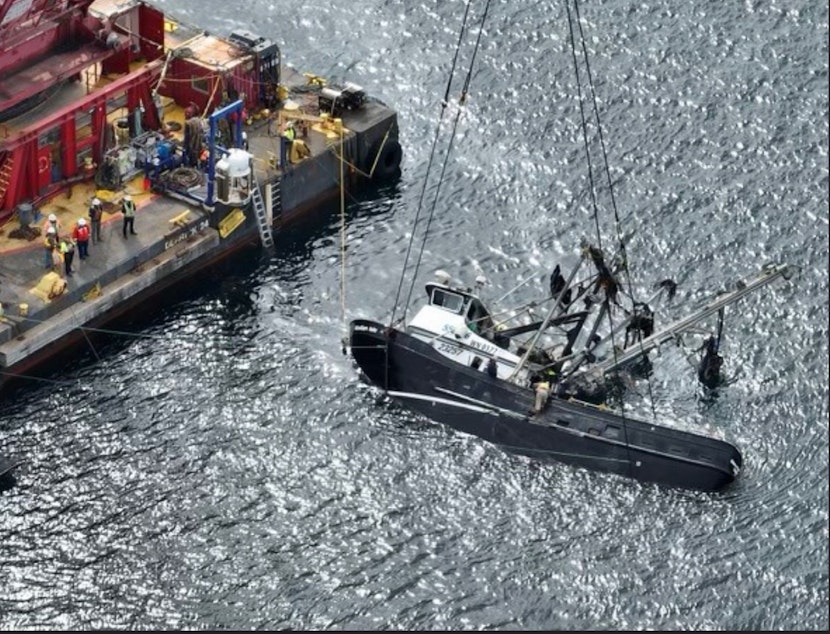On a low tide, two stories collide: Reporter's Notebook

It’s funny how stories collide sometimes.
I was out covering a joyous, muddy gathering that was hand-building a traditional “clam garden” — likely the first to be built in the United States in nearly two centuries — on the Swinomish Reservation. On that sunny summer day, one of the year’s lowest tides exposed acres of tideflats, making it possible for air-breathing, rubber-booted humans to build the garden and give local seafood production a boost.
While I was recording people schlepping boulders to revive an ancient Swinomish tradition, that same low tide was creating trouble for a Swinomish fishing boat just 6 miles away.
That boat, the Aleutian Isle, would sink 24 hours later.
The Aleutian Isle, a purse seiner about to join a tribal fishery for sockeye salmon, was leaving a marina in Anacortes on that super-low (-2.6 foot) tide when it apparently ran aground.
Eyewitness Brit Reese was meeting a friend on the docks and saw the whole thing, including a smaller boat having to tow the Aleutian Isle to deeper water. It’s unknown what damage, if any, the incident did to the Aleutian Isle.
The next day, while fishing off the west side of San Juan Island, the Aleutian Isle radioed for help, saying it was taking on water. It sank to the bottom of Haro Strait and left a 2-mile sheen of diesel at the surface. All five crew were rescued. Two other fishing boats came to their aid, as did a Swinomish Fisheries Department patrol boat.
In the following days, I sought answers from several government agencies — federal, state, tribal — about what happened and who was involved, but I got little information out of them except that the boat was fishing for sockeye.
The boat’s previous owner sold it before he died in 2021, and my efforts to find out who bought it from him were fruitless.
Then, after learning of the Anacortes marina incident from Reese's comment on a U.S. Coast Guard Facebook post, I filed a public records request with the Port of Anacortes and learned of the boat’s owner, a Mount Vernon man.
The owner has published a notice in a local newspaper, soliciting claims from anyone suffering damages from the diesel spill. He has not responded to requests for comment, and Swinomish officials have declined to comment.
I still don’t know who was on board the Aleutian Isle when it went down — I was (and am) hoping to hear a firsthand account of the sinking.
The Swinomish have a long history — from ancient clam gardens to salmon-habitat restoration projects — of stewarding the Salish Sea, even as they were denied their treaty rights to fish there for many years. But this time, a Swinomish boat in a fishery regulated by the Swinomish government led to a maritime disaster and diesel spill, and no one has been willing to talk about it.
Know something about this incident that I don’t? Drop me a line.
READ MORE about the clam garden revival, the sinking of the Aleutian Isle, and the dangerous effort to raise the boat from the depths of Haro Strait.





